« When we used to go out on the roads… »
« Quand on partait sur les chemins… » sang Yves Montand in « La bicyclette » in 1968. As the fine weather is back, this month tintin.com invites you to sit on the saddle and follow in Tintin's footsteps to discover the bicycle models - and their uses - featured in his adventures.
An agile, practical, economical and silent companion, the bicycle alone embodies the freedom to come and go as you please. So much so that between the 1920’s and the 1950’s, it won over a wide public - across all generations and social backgrounds. It even reached its golden age, becoming THE popular means of individual transport par excellence.
Yet they only appeared very discreetly in The Adventures of Tintin, which was in full swing at the same period. And when they did, it was more often as an ‘extra’ than a ‘leading actor’.
It should also be said that Hergé was particularly passionate about motorised vehicles. He therefore took great pleasure in depicting them faithfully and in large numbers, reserving - unintentionally - the use of the ‘Little Queen’ (the bicycle took on the nickname of ‘little queen’ at the end of the 19th century, in honour of the Dutch queen, Wilhelmine of Orange-Nassau, who used to go for rides on a bicycle) for a few rare but exceptional sequences.
And it's precisely these that we're going to be focusing on this month...
So saddle up. We're off!
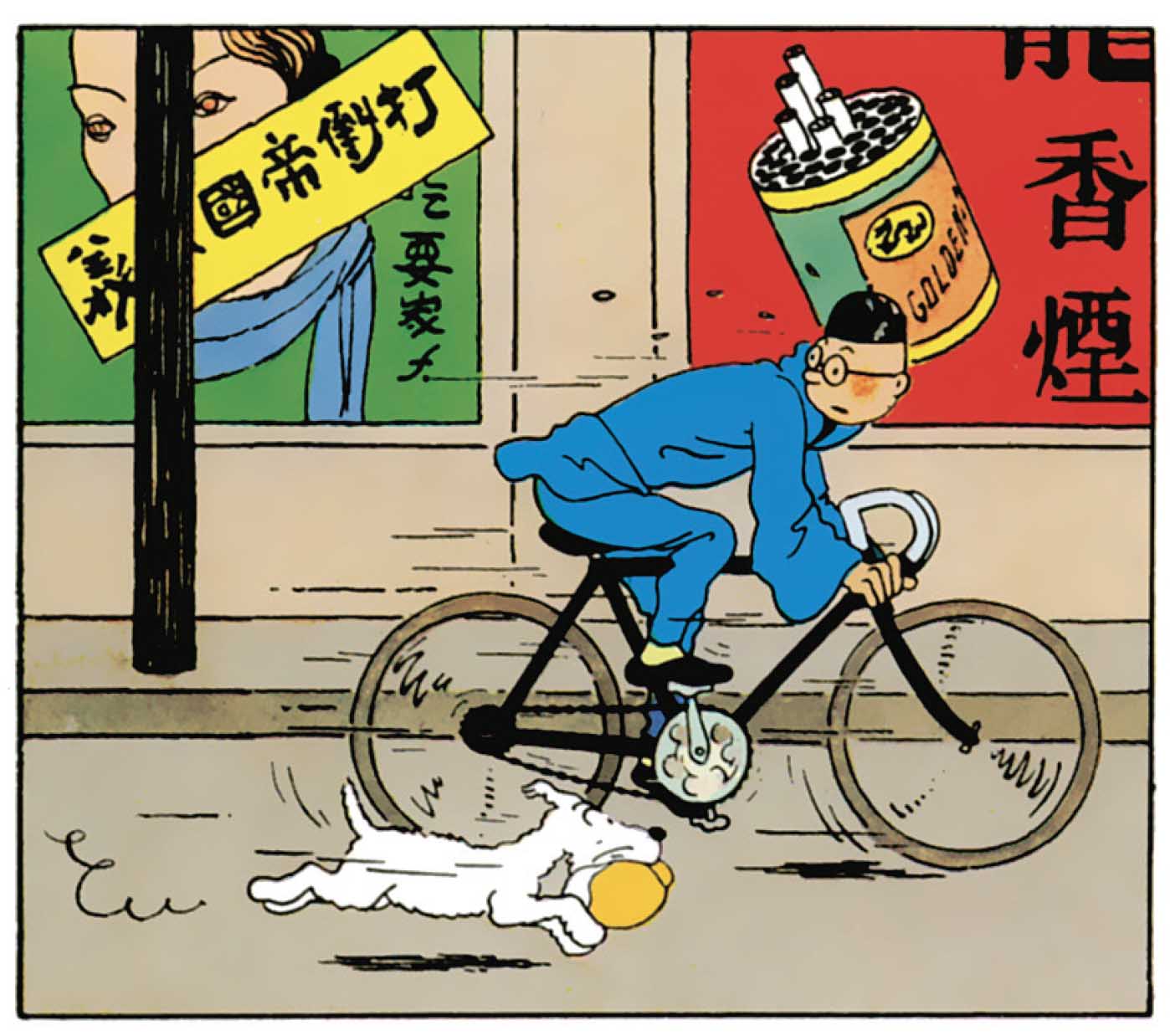
A beautiful escape
Tintin's first ride on two wheels was in 1936, in The Blue Lotus. It was a remarkable debut, since it was the subject of a series of vignettes that gave rise to the longest bicycle sequence in the entire saga.
And yet, this grand premiere was a pure coincidence.
To avoid running into a patrol of Japanese soldiers, the young man borrowed a bicycle parked in the street a few metres ahead of him. It's not surprising that he found one so easily, as bicycles are an integral part of the Chinese landscape and local life. It is so culturally rooted there that, after the Second World War, the ”Middle Kingdom” was even known and recognised as the world's leading producer and user of bicycles. And that's saying something!
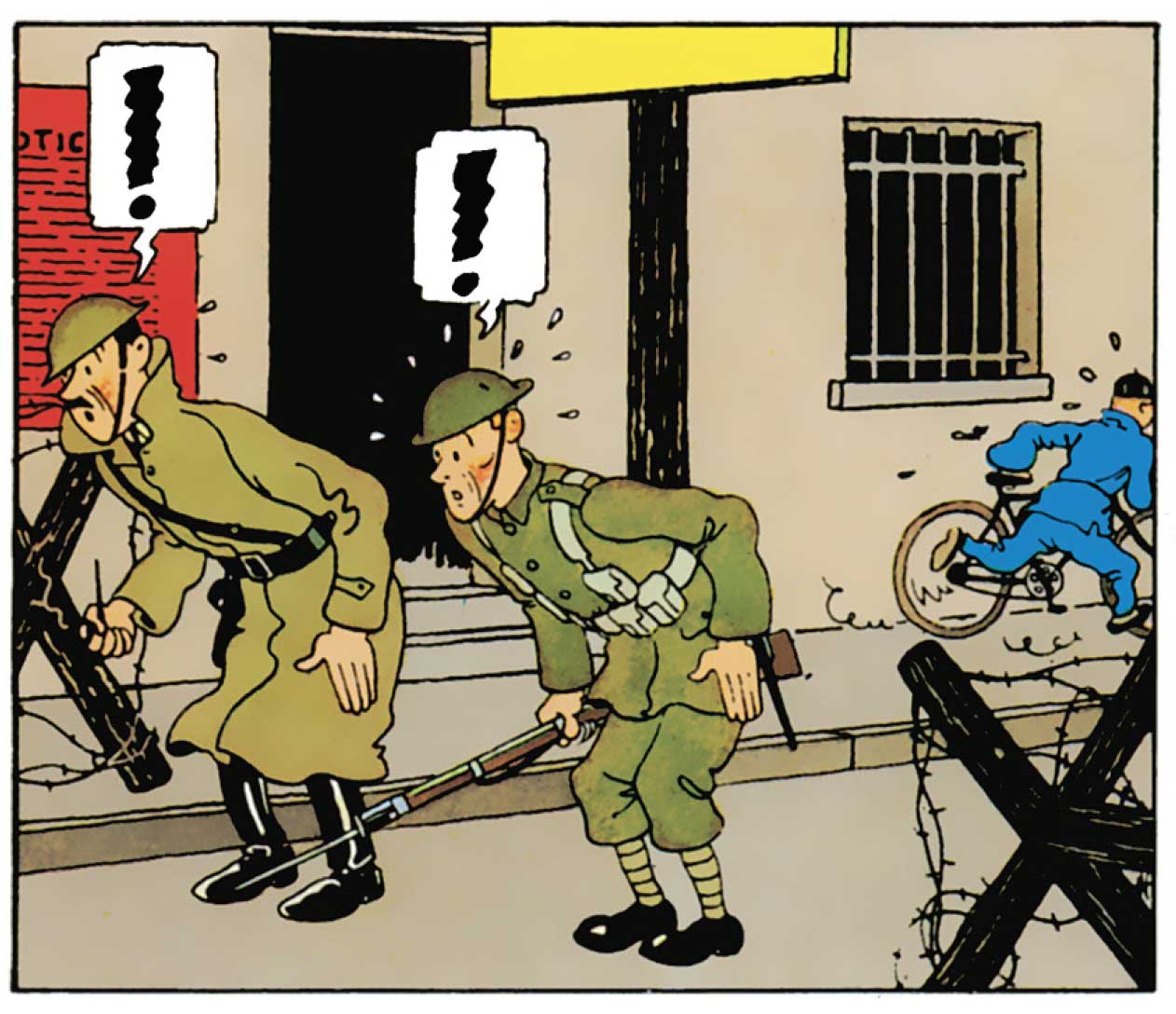
Tintin used this vehicle as a means of escape and freedom to get away in style... And it was very stylish.. The model he used had all the stylistic features of the British bikes that were top sellers at the time. With its black frame and road handlebars, it is in the same vein as a "1930 Club" by Raleigh (an English brand founded in 1887 and world market leader in the 1920’s) or a "Gentleman's Sport Light Roadster" by Elswick Hopper (another renowned British firm), for example. Rather sporty bicycles!
In fact, even though he's raising his head, Tintin almost looks like a racer, as the ergonomic handlebars on his bike allow him to change position so easily. He starts by standing on the pedals - to kick-start a powerful acceleration, before adopting a more aerodynamic posture to take advantage of the momentum he has just generated. Unfortunately for him, his run ended as he flew through the air from the saddle of his bike onto the bed of a flatbed truck.
.jpg)
The “Hirondelles”
In The Seven Crystal Balls, where Tintin and the kidnappers of Calculus cross paths with a police cycling squad. It just goes to show that cycling is a serious business, and a very serious one at that!
There's no denying it, this road squad is reminiscent of the first police bicycle patrols, created in France at the beginning of the 20th century by Prefect Lépine: the famous ‘Hirondelles’. In fact, the link is obvious, in that these police officers wore identical outfits to those worn by their historic Parisian counterparts.
In this case: "black knee-length knickerbockers, knee pads, a single-button jacket of the same colour with a turned-down collar and a kepi (...). (A) uniform (...) that (gives) cycling officers the look of Alpine hunters in field dress" (quote from an article published on 15th March 1902 in La Vraie Police, a magazine devoted to the French administrative and judicial police).
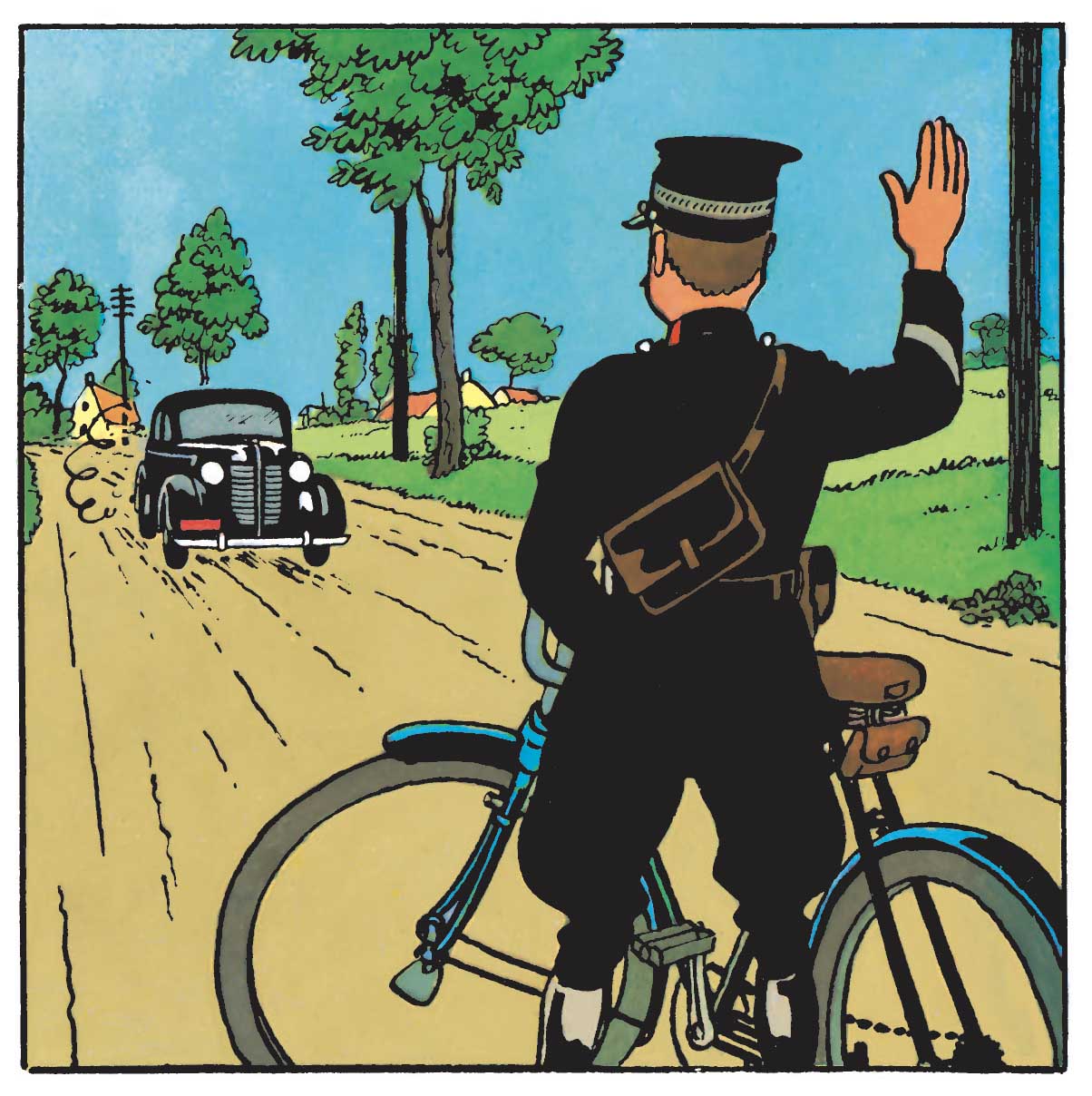
Their company bicycles also bear a striking resemblance to those of the Ile-de-France workers. The latter were equipped with machines produced and sold by Manufrance, under the brand name... Hirondelle (from which they got their nickname).
Here, Hergé seems to have taken a few ‘good ideas’ from the manufacturer in Saint-Etienne to create a bicycle that is halfway between the ‘Tour de France’ model and the ‘Cyclotourisme’ model, but with some notable differences. For example, the curved front fork has been replaced by a perfectly straight structure.
What's far more surprising, however, is the colour of their livery, because at the time, all emergency vehicles were entirely black. Gendarmerie blue didn’t make its appearance until much later, at the end of the 1960’s. Undeniable proof that Hergé was a visionary ahead of his time.
Published in 1948, this adventure also bears witness to a major technological development: the gradual motorisation of the marshals.« The use of motorbikes did not really take off until after the Second World War, with the creation of motorbike brigades (B.Mo.) in each departmental capital in October 1945 and a motorbike squadron in the Paris Republican Guard in 1952», explains an article on the subject published on the website of the Ministry of the Interior and Overseas France. At that time, it was not uncommon to come across mixed brigades in which pedalling and motorised gendarmes worked side by side to monitor road traffic.
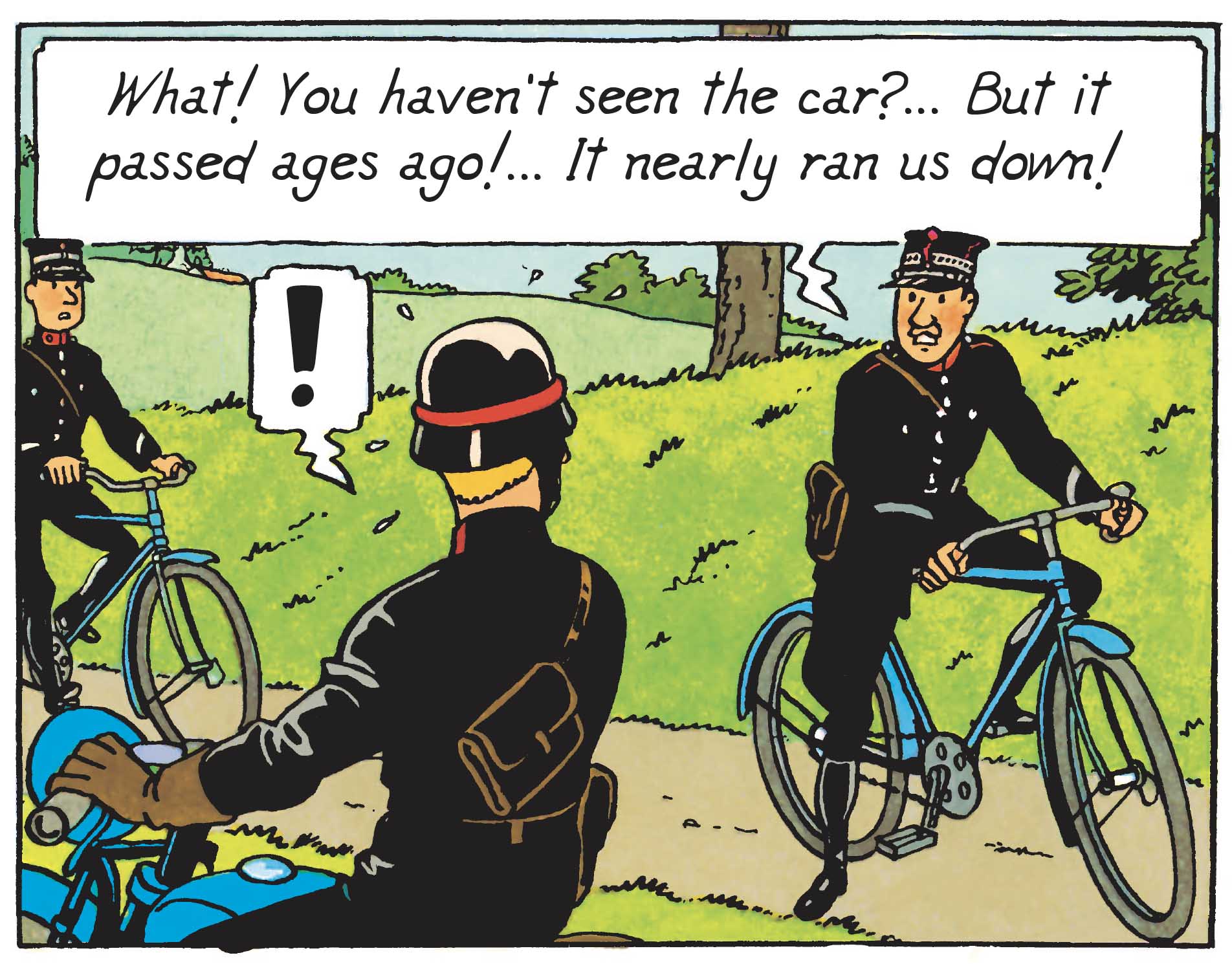
The key to the fields
In The Castafiore Emerald, Hergé placed his characters in the countryside for the duration of this adventure, in the verdant setting of Marlinspike Hall. This bucolic environment allowed him to judiciously intersperse two cycling scenes that act as breaths - in the fresh air - in the middle of the high points of his narrative.
The first to set off along the country lanes is none other than Igor Wagner, the pianist of the famous Milanese nightingale. He's supposed to be practising his scales in the keys of G and F all day long, but instead he takes to the fields to go to the next village to place a bet on the right horse.
To do this, he borrowed « Nestor's ‘old bicycle ». A very basic and simple model. Its common, all-purpose grey colour confirms that this is a popular model, and therefore a mass-produced model. On the other hand, the choice of colour makes it difficult for readers to distinguish between the chromed parts and those that are painted and/or enamelled.
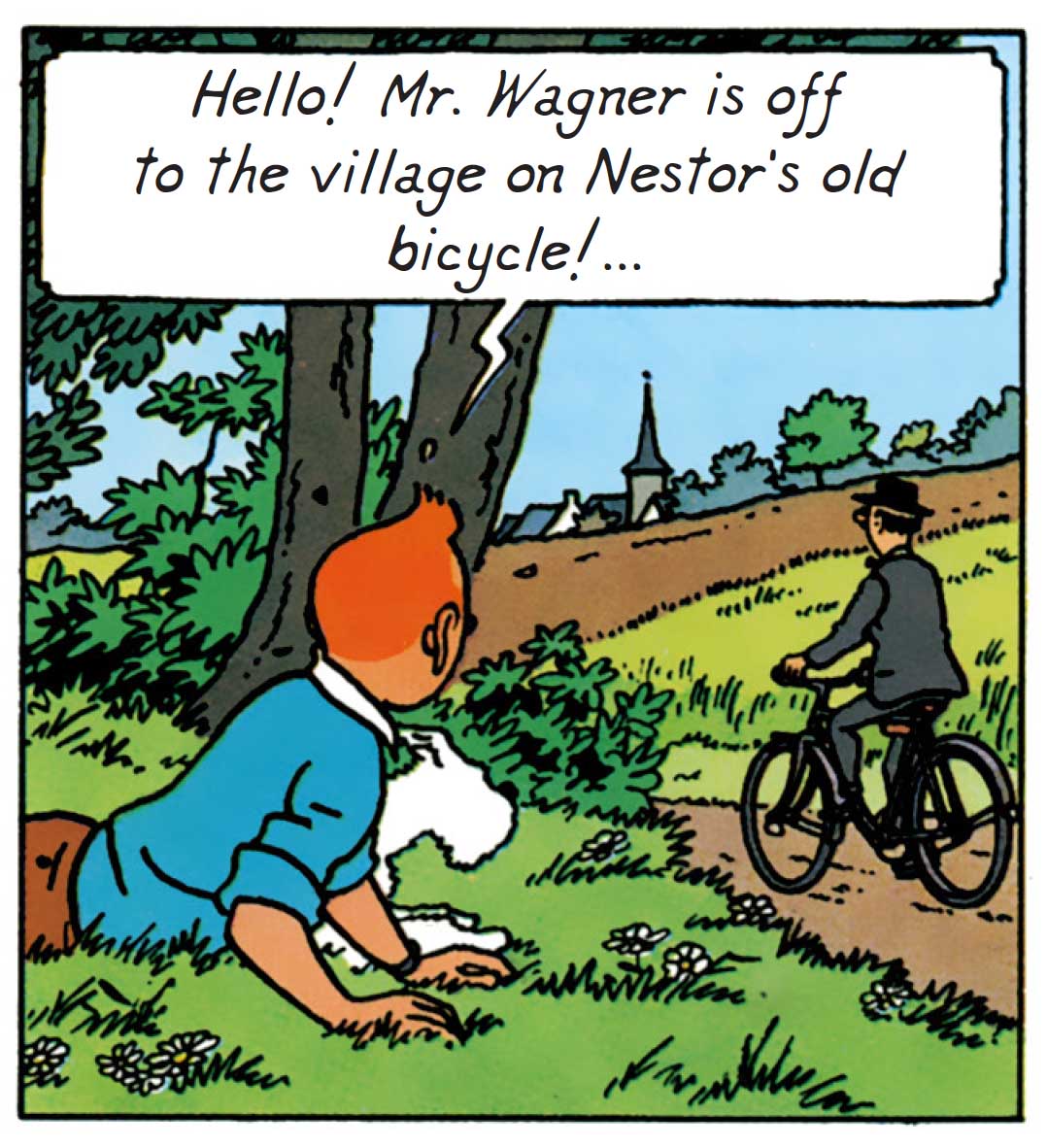
However, Hergé's drawing is sufficiently precise and detailed for them to appreciate its general structure. The frame, in particular, whose tubes must surely have been soldered (a process for joining metals at low temperatures), as no joints are visible. There are, however, some connecting elements, albeit purely anecdotal. In this case: the two rivets positioned at the bottom of the front mudguard. Also of note is the absence of a chain cover on the crankset, and the touch of fantasy provided by the brown leather pannier to match the spring-mounted saddle..
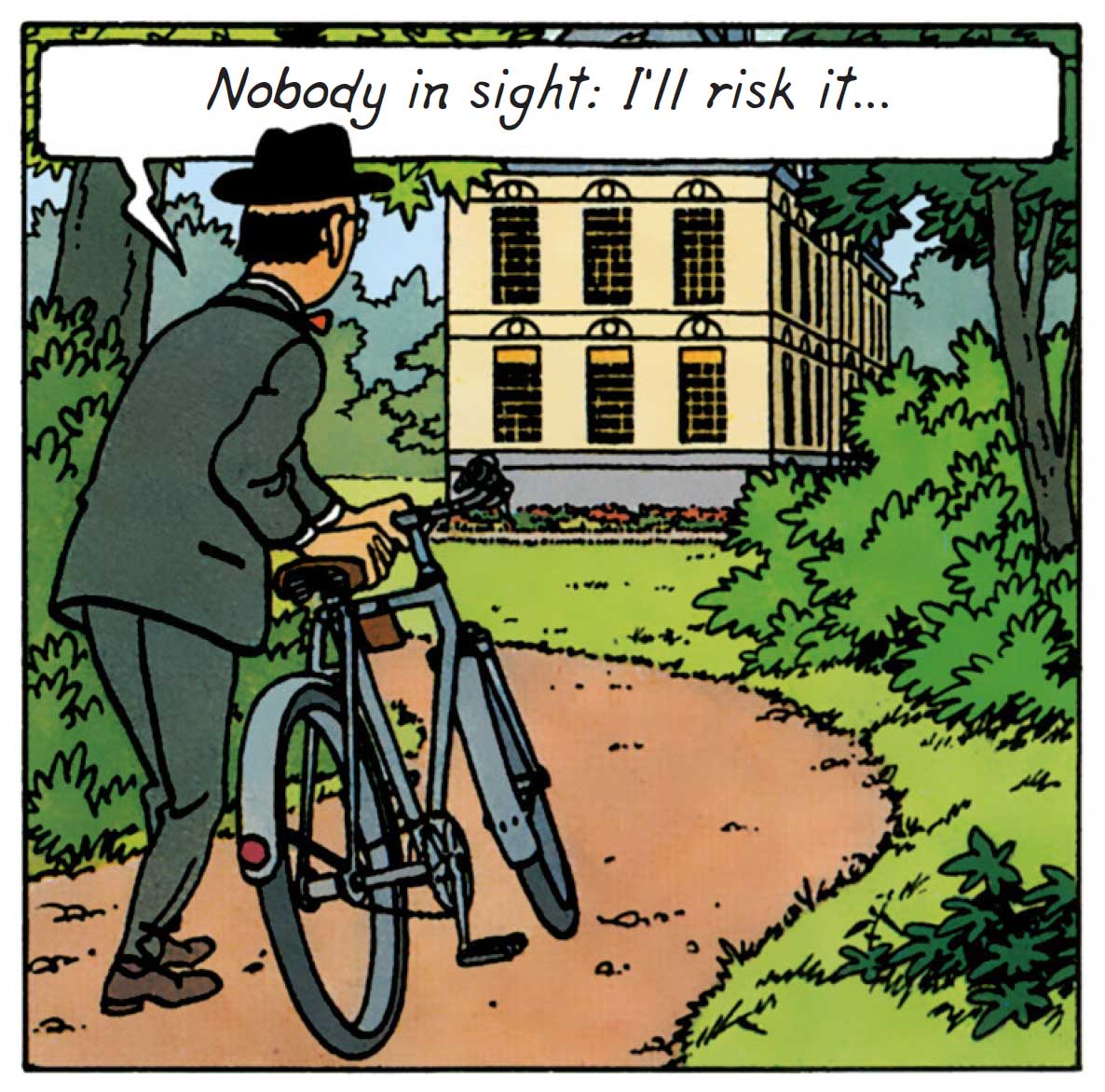
Tintin's bike, on the other hand, looks more luxurious because it's better equipped. Among the various options are a luggage rack topped by a wicker basket to accommodate Snowy as a passenger, a double rear light for greater visibility and therefore safety, a red frame, chrome mudguards and half-risen handlebars.
Unfortunately, it's hard to say much more than that, as it's only seen once, in a three-quarter view and largely hidden by the young hero's body. Be that as it may, it is clear that it is fully in line with the road bikes produced at the time, such as the 'Mixte' from Ruddy Star and the city bikes produced by Motobécane and Peugeot, among others.
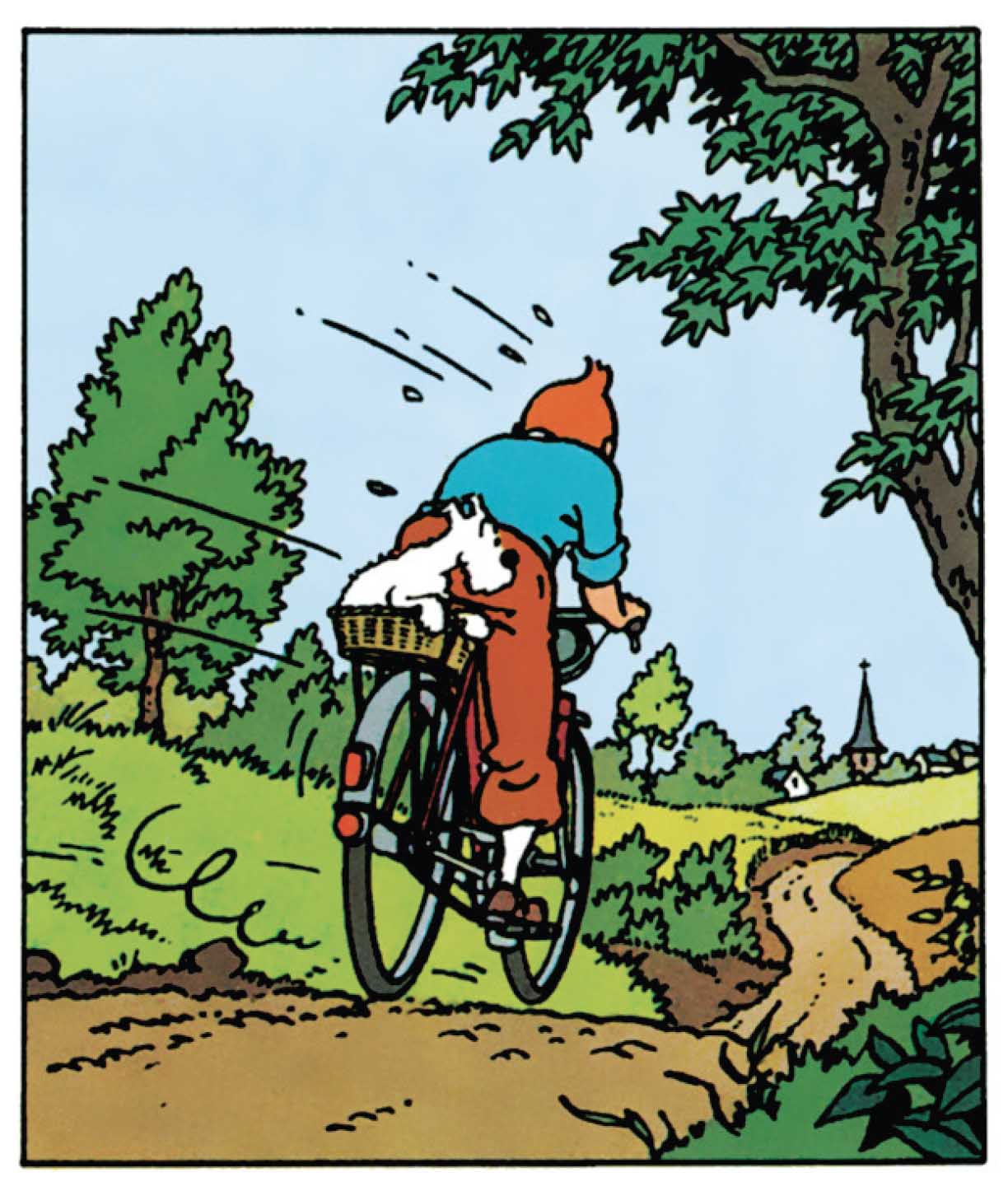
And what about competition?
How can we conclude this article on cycling without mentioning the sporting dimension of the machine? As it is totally absent from the adventures, you have to turn to the Journal Tintin to find Hergéan illustrations on this theme.
And there's no shortage of them, since every year the weekly publication for young people aged 7 to 77 covered THE must-attend event for fans of the ‘Little Queen’. The Tour de France.
For the occasion, Tintin sometimes donned a jersey (preferably a yellow one) to take part in this legendary race himself; sometimes he dressed up as a supporter... er, reporter to meet the great champions of the discipline.
In both cases, he was always ready to put his hand to the grindstone or his head to the handlebars to celebrate, as he should, this huge popular festival.
That's it, we've crossed the finish line, but if you'd like to find out more on the subject, don't hesitate to (re)read ‘Tintin et les deux-roues’, an article published on our site in 2014.
.jpg)
Two wheels... Three wheels...?
For the purists out there, the term ‘two-wheeler’ refers to a single-track vehicle. By this we mean that its wheels must be mounted in line and that they leave only a single footprint.
According to this definition, tricycles and other multi-wheeled hybrid curiosities do not fall into this category, even though their design is similar to that of cycles and/or motorbikes.
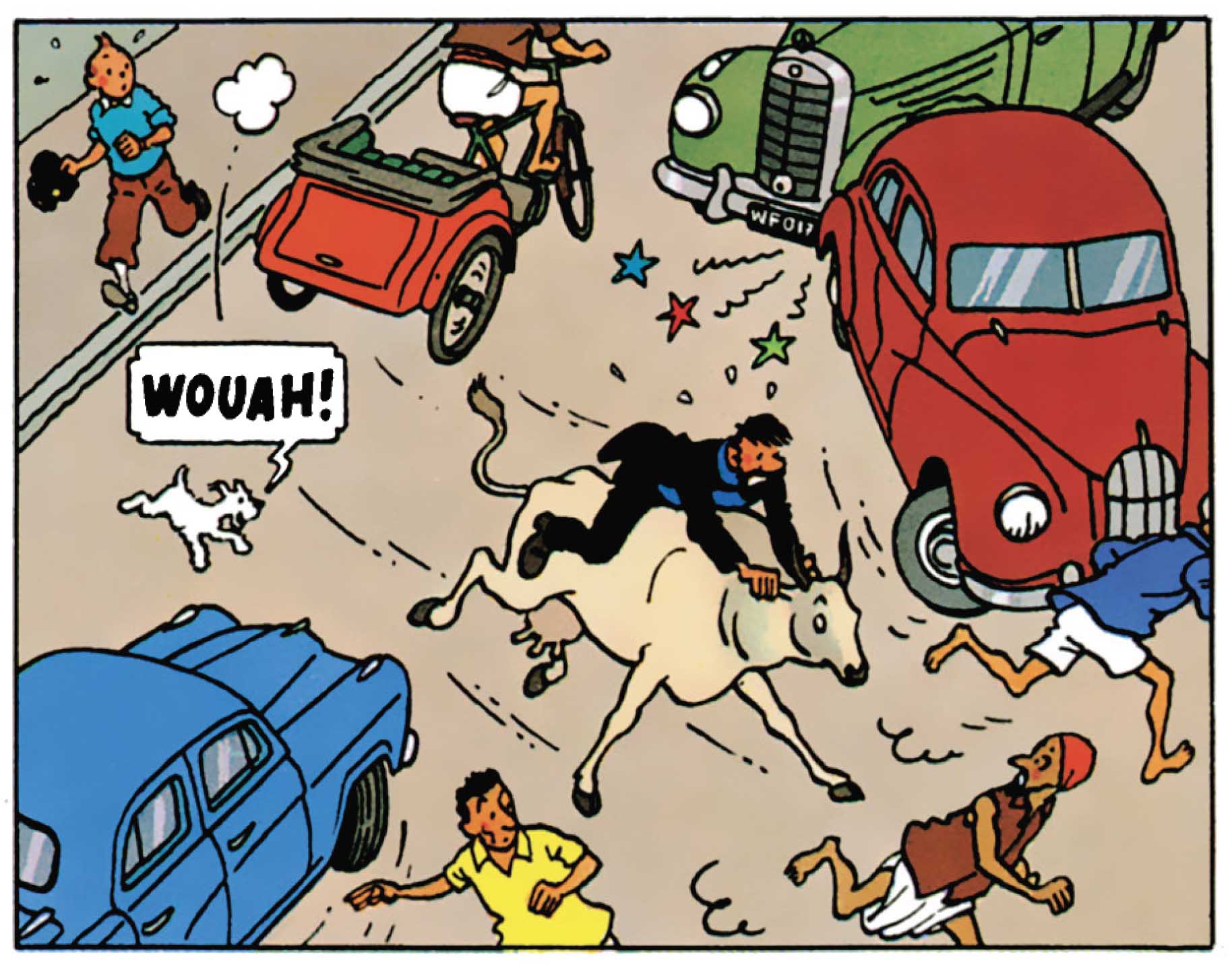
Texts and pictures © Hergé / Tintinimaginatio - 2024




 News
News Forums
Forums E-books
E-books

